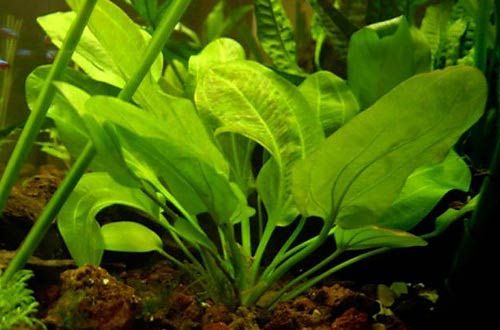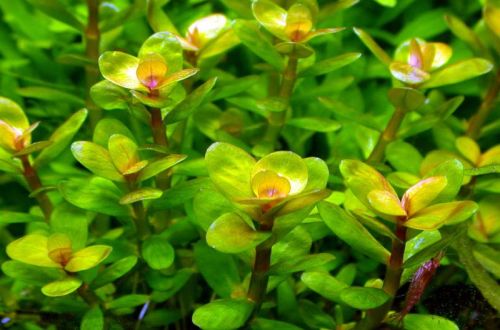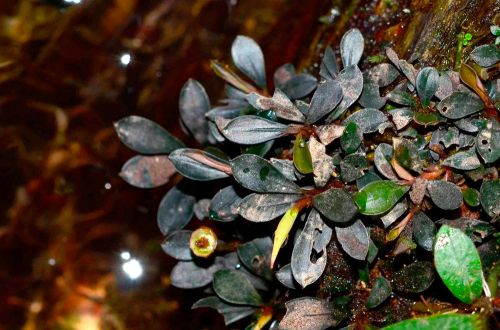
Echinodorus large-leaved
Echinodorus large-leaved, scientific name of the genus Echinodorus sp. “Macrophyllus”. The plant is native to South America. The natural habitat is located on the southeast Atlantic coast of Brazil in the Rio de Janeiro region. The name itself has been known in the aquarium trade for a long time. However, under it, several different species are on sale at once, the most common is Echinodorus cordifolia and its subspecies.

The true Echinodorus macrophyllus is probably not used as an aquarium plant. According to the researcher Lehtonen, S. from the University of Turku (Finland), Echinodorus large-leaved forms large bushes from massive leaves collected in a rosette. The leaf blade is heart-shaped or ovoid in shape, reaches 8–25 cm in length and 7–26 cm in width. Taking into account the long petiole (up to 45 cm), the height of the plant itself can be up to a meter. Young leaves are reddish-brown, older leaves turn green.
Able to grow both submerged in water and in air on moist substrates. Due to its size, it is only suitable for large paludariums, open greenhouses, ponds and other bodies of water. Not demanding on external conditions, perfectly adapts to a wide range of hydrochemical parameters, temperatures, light levels. In dry rooms, you will need to ensure regular spraying of the leaves to prevent them from wilting.





